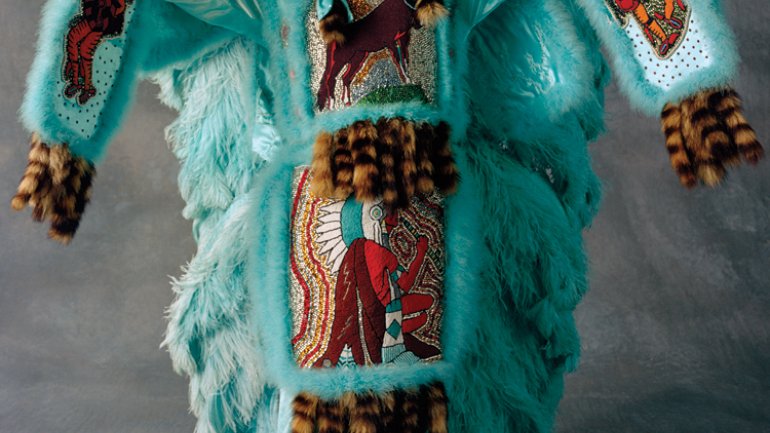Troubles or No, the Suits Get Made
Troubles or No, the Suits Get Made
Five years ago, the future of the Mardi Gras Indians in New Orleans was in doubt, because the levees that burst after Hurricane Katrina deluged the city's working-poor neighborhoods, where most tribes were based. Viewers of the HBO series Treme have had a front-row seat to the problems faced by those who call themselves Indians. For one thing, it has been unclear how these New Orleanians, who were scattered and basically homeless after the hurricane, would find the time and thousands of dollars needed to create new suits every year, as is the tradition.
But tradition has proven resilient. Despite the blows New Orleans has suffered, several hundred Indians are thought to be active still in the city's roughly three dozen tribes.
The Mardi Gras Indian tradition, which dates back to at least the 1880s, is a spiritual and artistic homage to American Indians who took in runaway slaves. Sometimes called "black Indians," the Mardi Gras Indians are ethnically African-American, in some cases with American Indian ancestry as well. The tribe leaders, called big chiefs, "earn their feathers" and climb a hierarchy that includes "wild men," who incorporate fur and animal skin into their suits and wear horns in their crowns. (Bigger tribes may also include tiers of chiefs, spy boys, flag boys, and a few other designations.) For four days each year, the Indians don their suits, pick up tambourines and drums, and roam the city streets.
On Mardi Gras morning, crowds gather outside the homes of big chiefs like Monk Boudreaux, who emerges in full regalia. Chiefs conceive of their suits' themes and images by dreaming about them, they say, then sketching designs onto heavy cloth. Then they sew beads, sequins, and glass stones onto the cloth to create "patches." The final suits, created around the patches, use satin, velvet, and several hundred dollars' worth of feathers, plumes, and fluffy marabou.
Arts supporters worried that the nation's financial crisis might further curb the Indians' capacity to spend $2,000 to $3,000 on a suit. (An elaborate big chief's suit can cost several times more.) But maybe the tradition is recession-proof. Boudreaux has created an annual suit for a half-century by sewing every day, buying beads a little bit at a time, and as Mardi Gras nears, leaving strategic bills unpaid.
"We were born poor," he says. "It's been a bad economy for us our entire lives."
Katy Reckdahl is a writer in New Orleans.

